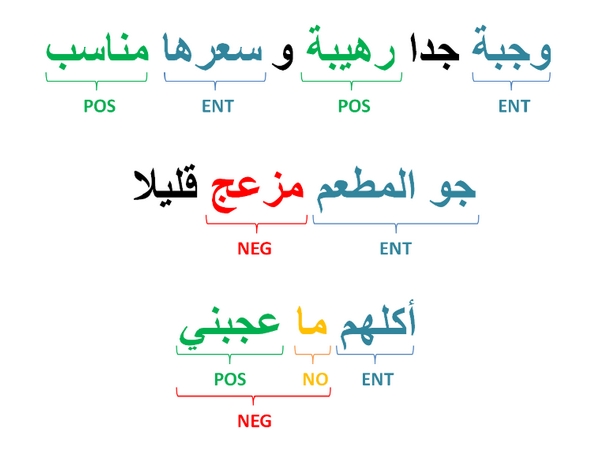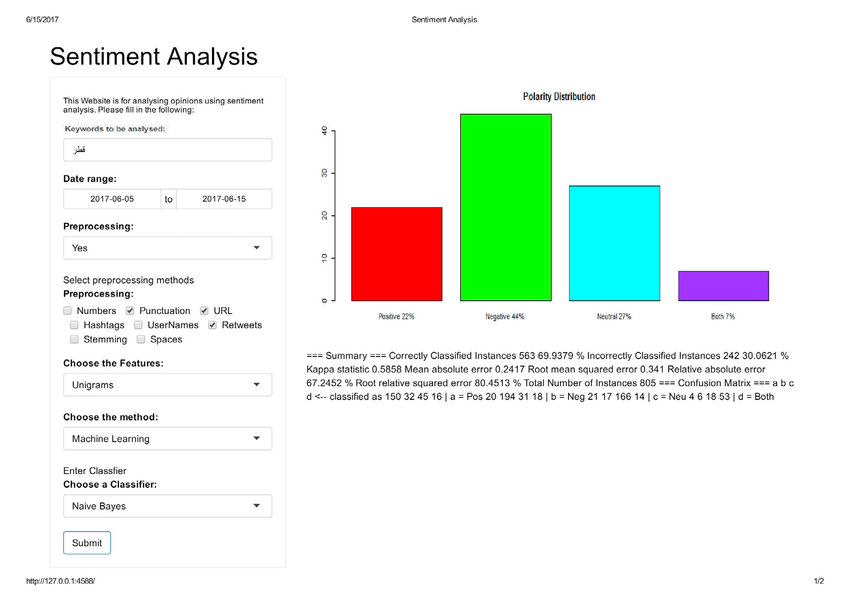In today’s digital age, people express their opinions, emotions, and attitudes through various platforms such as social media, blogs, and online forums. Sentiment analysis, also known as opinion mining, is a powerful tool that helps to understand and interpret these sentiments from textual data. While sentiment analysis has been predominantly applied to English texts, its significance is equally crucial in other languages, particularly in the Middle East region where Arabic is widely spoken and written. In this article, we will explore the importance of Arabic sentiment analysis, challenges, tools, and future trends.
What is Arabic Sentiment Analysis?

Sentiment analysis is a natural language processing (NLP) technique that aims to determine the emotional tone and polarity of a piece of text, whether positive, negative, or neutral. By analyzing vast amounts of textual data, sentiment analysis provides valuable insights into public opinion, customer feedback, and social trends.
Importance of Sentiment Analysis
In the era of information overload, sentiment analysis offers numerous benefits across various domains. For businesses, it aids in understanding customer satisfaction, brand perception, and market trends. Governments and policymakers can leverage sentiment analysis to gauge public sentiment about specific policies or societal issues. Moreover, sentiment analysis is instrumental in social and psychological research, enabling a deeper understanding of human behavior.
Challenges in Arabic Sentiment Analysis
While sentiment analysis has proven effective for English, it faces unique challenges when applied to Arabic language data.
- Language Complexity: Arabic is a Semitic language with complex grammar and numerous dialects, making sentiment analysis more intricate than in other languages.
- Cultural Nuances: Cultural variations significantly impact emotions and expressions, making it challenging to develop universal sentiment analysis models.
- Data Availability: The availability of labeled Arabic sentiment datasets is limited compared to resources available for English sentiment analysis.
- Lack of Standardized Datasets: The lack of standardized datasets hinders the development and evaluation of accurate Arabic sentiment analysis models.
Arabic Sentiment Analysis Tools and Techniques

To tackle the challenges, researchers and developers employ various tools and techniques tailored for sentiments in Arabic.
- Rule-Based Approaches: Rule-based methods utilize predefined linguistic rules to identify sentiment-bearing words and expressions.
- Machine Learning Models: Machine learning algorithms, such as Support Vector Machines (SVM) and Naive Bayes, are commonly used for sentiment classification.
- Deep Learning Algorithms: Deep learning models, particularly Recurrent Neural Networks (RNNs) and Transformer-based models, have shown promising results in sentiment analysis.
- Hybrid Approaches: Hybrid approaches combining rule-based and machine-learning techniques offer enhanced accuracy in Arabic sentiment analysis.
Introducing AIM Insights Tool by AIM Technologies
AIM Technologies has developed the AIM Insights tool, a state-of-the-art platform designed specifically for Arabic sentiment analysis. This tool leverages advanced NLP techniques to deliver accurate and culturally sensitive sentiment analysis. AIM Insights stands out with its capability to handle the complexities of the Arabic language, including dialects and cultural nuances.
Features of AIM Insights Tool
- Accurate Sentiment Detection: The tool employs deep learning models to provide precise sentiment classification, whether positive, negative, or neutral.
- Dialect Recognition: AIM Insights can accurately analyze sentiments across various Arabic dialects, ensuring comprehensive coverage of the language.
- Real-Time Analysis: The platform offers real-time sentiment tracking, allowing businesses and organizations to monitor public opinion instantly.
- User-Friendly Interface: AIM Insights features an intuitive interface, making it accessible to users with varying levels of technical expertise.
Case Studies and Real-Life Examples
To illustrate the effectiveness of AIM Insights, let’s look at a few case studies and real-life examples involving tweets:
- Social Media Campaigns: A major telecom company “Vodafone” used AIM Insights to analyze customer feedback on a new marketing campaign. By monitoring sentiment on X, they identified key areas of customer dissatisfaction and quickly addressed them, resulting in improved customer sentiment and increased brand loyalty.Example Tweet: “خدمة العملاء في فودافون ممتازة جدًا! دائمًا مستعدين للمساعدة وحل المشاكل بسرعة.” (Translation: “The customer service at Vodafone is excellent! Always ready to help and solve problems quickly.”)
Quotes from Influencers
Influencers in the field have recognized the impact of Arabic sentiment analysis. Here are some quotes:
Dr. Ahmed Al-Ghamdi, Data Scientist: “AIM Insights is a game-changer in Arabic sentiment analysis. Its ability to accurately capture sentiments in various dialects is unmatched.”
Laila Hamdan, Social Media Expert: “The real-time analysis feature of AIM Insights has revolutionized how we monitor and respond to customer feedback. It’s a must-have tool for any business operating in the Middle East.”
Applications of Arabic Sentiment Analysis
Sentiment analysis Arabic finds diverse applications across industries and research areas.
- Social Media Monitoring: Brands and organizations monitor social media sentiments to understand how their products or services are perceived by the audience.
- Brand Reputation Management: Sentiment analysis helps businesses manage their brand reputation by identifying and addressing negative sentiment promptly.
- Market Research and Customer Feedback: Sentiment in Arabic aids in market research, enabling businesses to better understand customer preferences and demands.
- Political and Societal Analysis: Governments and researchers use sentiment analysis to study public opinions on political decisions and social issues.
Ethical Considerations
Despite its benefits, sentiment analysis raises ethical concerns that need to be addressed.
- Privacy Concerns: Analyzing individuals’ sentiments may infringe on their privacy, necessitating responsible data handling.
- Bias and Fairness: Biases in training data can lead to biased sentiment analysis results, which might perpetuate stereotypes and prejudices.
- Misuse and Manipulation: Sentimental analysis can be misused to spread misinformation or manipulate public opinion.
Future Trends
The field of sentimental Arabic analytics is constantly evolving, and several trends are shaping its future.
- Advancements in NLP: Advancements in NLP technology will improve the accuracy and efficiency of Arabic sentiment analytics.
- Multilingual Models: Multilingual sentiment analysis models will enable more accurate sentiment interpretation across various languages.
- Cross-Cultural Sentiment Analysis: Developing cross-cultural models will address the challenges posed by cultural nuances in sentiment analysis.
- Real-Time Sentiment Tracking: Real-time sentiment analysis will provide instant insights into rapidly changing opinions and trends.
Conclusion
In conclusion, Arabic sentiment analytics is a powerful tool that provides valuable insights into emotions and opinions in the Middle East. As the region’s digital landscape continues to grow, understanding public sentiment becomes increasingly vital for businesses, governments, and researchers.
If you want to experience the benefits of sentiment analysis firsthand and witness its potential to drive informed decision-making, request a demo from AIM Technologies today! Our advanced NLP-powered solutions are tailored to handle the complexities of Arabic language data, offering accurate and culturally sensitive sentiment analysis.
FAQs
What is the difference between sentiment analysis and opinion mining?
- Sentiment analysis and opinion mining are often used interchangeably, but sentiment analysis focuses on determining emotions’ polarity (positive, negative, neutral) while opinion mining delves deeper into the reasons and justifications behind those sentiments.
Can sentiment analysis accurately interpret sarcasm and irony in Arabic text?
- While advancements in NLP have improved sentiment analysis’s ability to identify sarcasm and irony, it remains challenging, particularly in languages with subtle nuances like Arabic.
How does sentiment analysis help businesses make better decisions?
- Sentiment analysis provides businesses with valuable insights into customer preferences and opinions, enabling data-driven decision-making in marketing, product development, and customer service.
Are there any free tools available for Arabic sentiment analysis?
- Yes, there are several open-source libraries and tools like AFINN-AR for rule-based sentiment analysis and Hugging Face’s Transformers library for deep learning-based approaches.
What are the main factors that affect the accuracy of sentiment analysis models?
- The accuracy of sentiment analysis models is influenced by the quality and size of the training data, the model’s architecture, and the handling of language-specific nuances.





